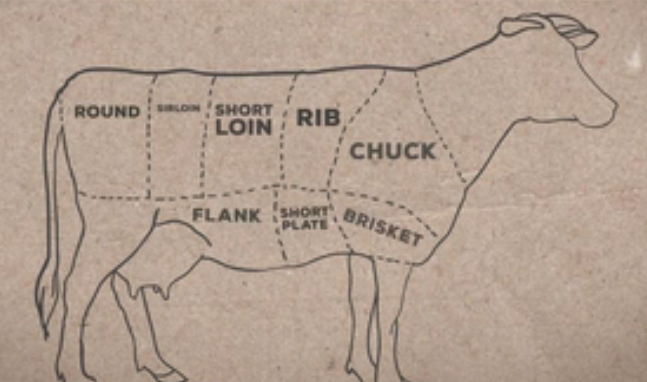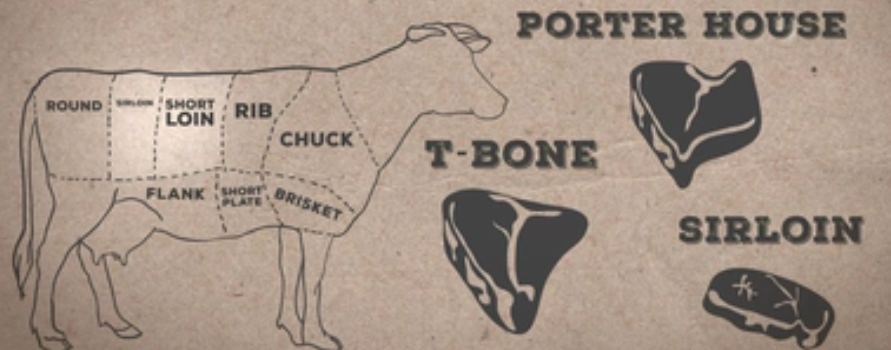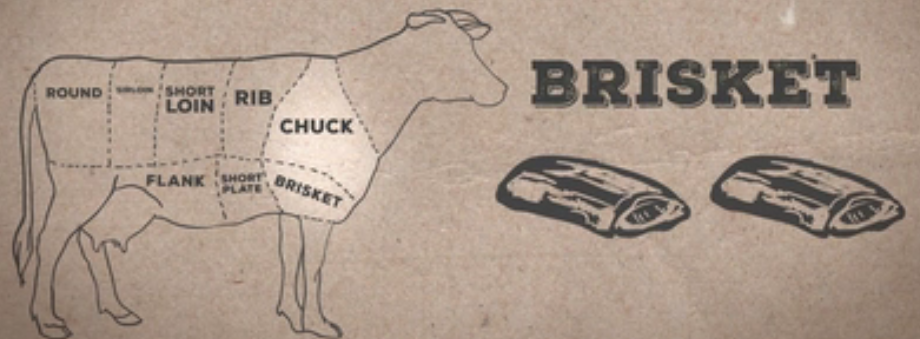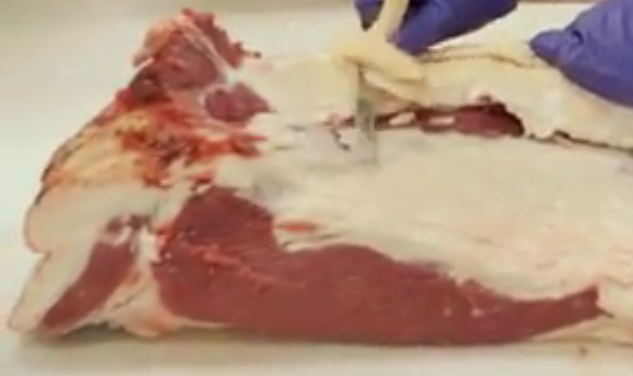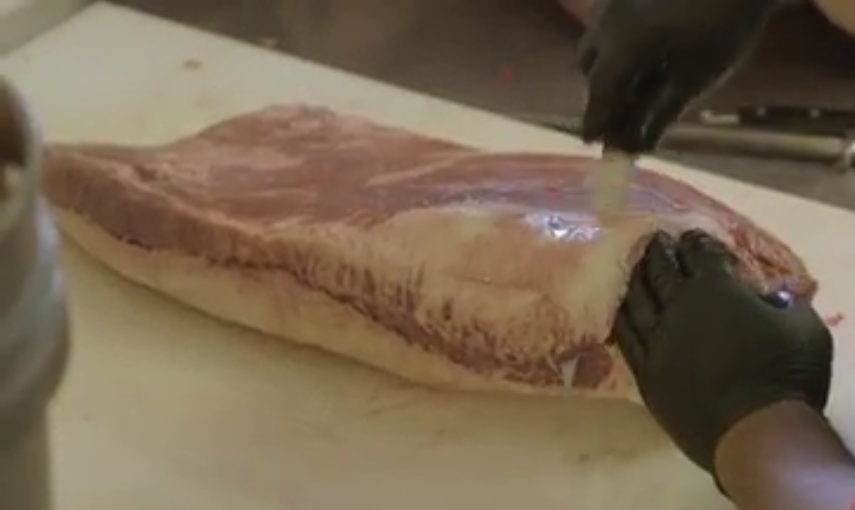Some factoids and suggestions...
|
From the middle rib area, near the top of the back, come the rib roast and back ribs, ...
|
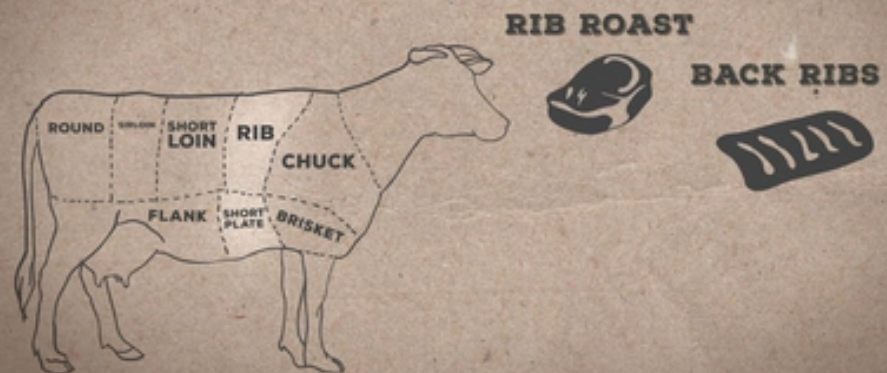
|
|
...the short ribs in the middle and the plate underneath.
|
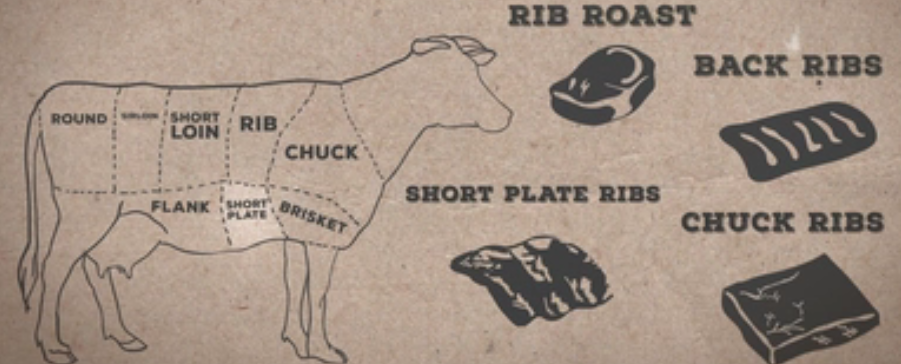
|
|
In the middle, the short ribs; to the cutter's left, the back ribs and ribeye steaks; to the
cutter's right, the plate ribs.
|
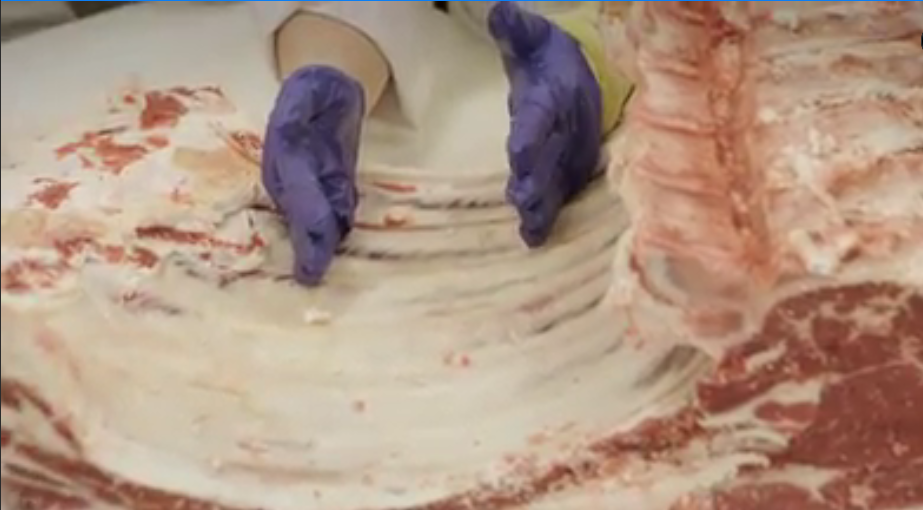
|
|
The plate ribs.
|
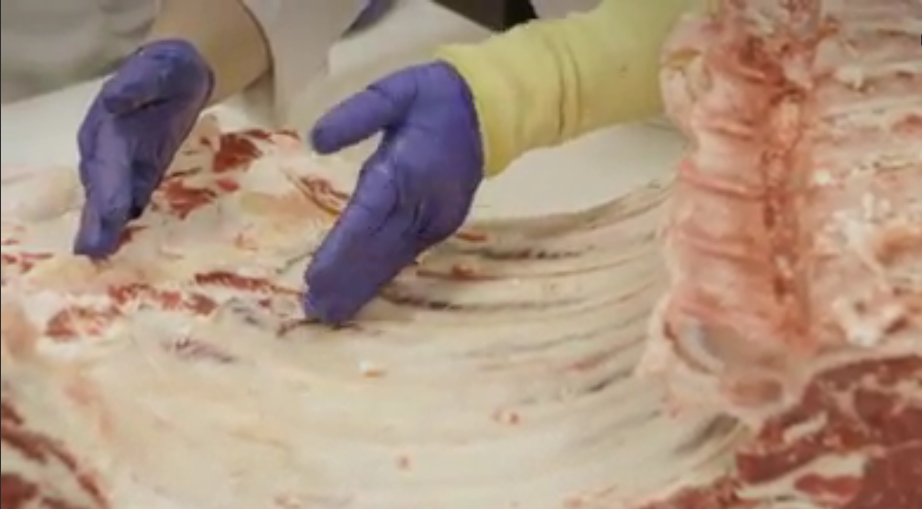
|
|
Separating the short- and plate ribs from the rest of the forward, upper ribs.
|
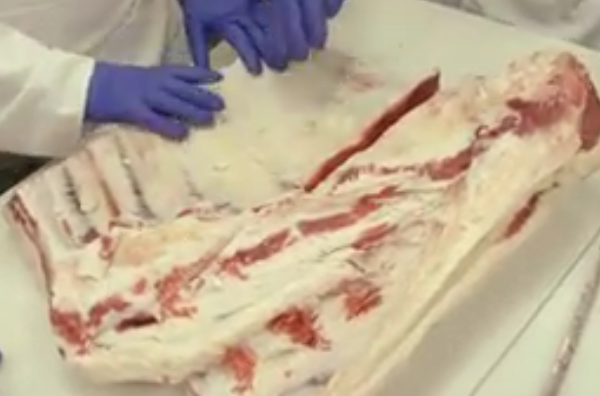
|
|
Peel the belly sheath from the plat ribs; on a pig, what you're peeling is called bacon.
|
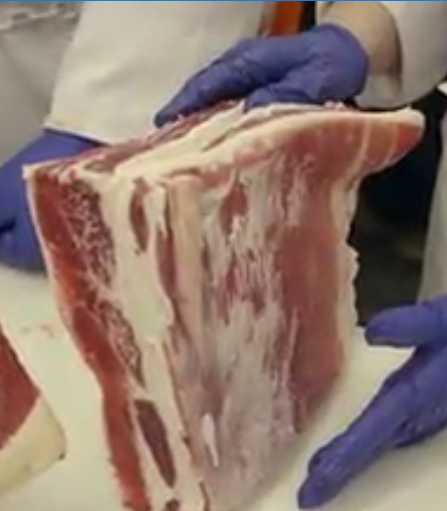
|
|
Plate rib, from the grocery store. About 6 hours to cook. Slather in Louisiana hot sauce, then
salt, then pepper. Fire about 285°, bone-side down.
|
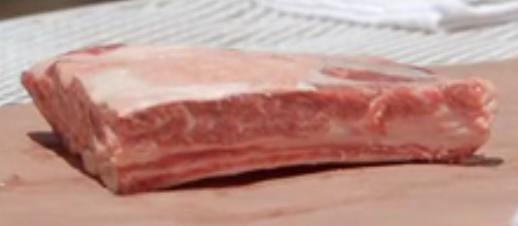
|
|
After 5½ hours, spritz liberally with water or apple juice, etc. (This is in place of
"mopping.") You don't want the "bark" around the edges to get too crunchy. (The bark should be
mostly fat, especially on a brisket, and not meat.) When done, it should be tender all the way
through to the bone and everywhere, but not falling off the bones. Let it rest out of the heat.
|
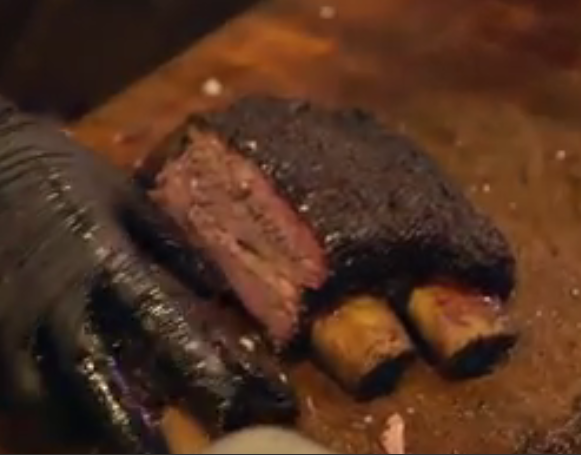
|
